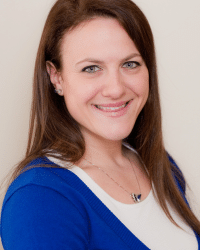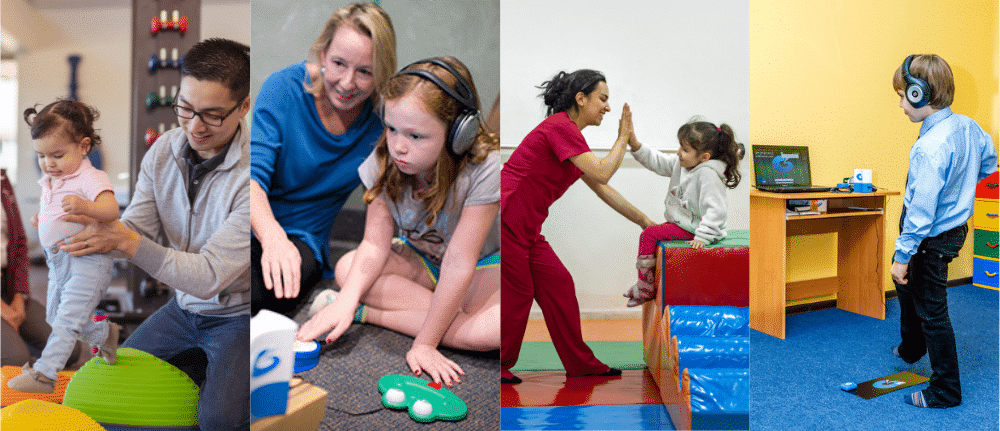Register for this Exciting Free Webinar!
Learn how to integrate IM into short-term intensive therapy to support positive outcomes for pediatric clients.
Interactive Metronome: An Integral Component of an Intensive Therapy Model
How to integrate IM into short-term intensive therapy to support positive outcomes for pediatric clients
Presented By: Rachel L. Lau, OTR/L & Emily Venable, OTR/L
 Rachel L. Lau, OTR/L earned a Master of Science degree in Occupational Therapy from Barry University and a Bachelor of Science degree in Health and Physical Education from Georgia State University. She currently resides in Atlanta, Georgia and owns a private pediatric practice, OT Links LLC. Rachel specializes in working with child with sensory processing deficits who have learning and/or behavioral issues although sees a variety of children with various medical conditions. She has previous experience implementing behavioral therapy programs and began her career working predominantly with children on the autism spectrum. She began as an adjunct professor in 2008 with Barry University in the Occupational Therapy program and joined them as a part time assistant professor in 2014. She has a passion for working with and teaching children and their families, and seeing the children she works with reach their full potential.
Rachel L. Lau, OTR/L earned a Master of Science degree in Occupational Therapy from Barry University and a Bachelor of Science degree in Health and Physical Education from Georgia State University. She currently resides in Atlanta, Georgia and owns a private pediatric practice, OT Links LLC. Rachel specializes in working with child with sensory processing deficits who have learning and/or behavioral issues although sees a variety of children with various medical conditions. She has previous experience implementing behavioral therapy programs and began her career working predominantly with children on the autism spectrum. She began as an adjunct professor in 2008 with Barry University in the Occupational Therapy program and joined them as a part time assistant professor in 2014. She has a passion for working with and teaching children and their families, and seeing the children she works with reach their full potential.
 Emily Venable, OTR/L received her Master of Health Science from the Occupational Therapy Program at the University of Florida and her Bachelor of Arts – majoring in Biology, from Maryville College. She has been practicing in the area of pediatric occupational therapy for over 20 years. Her clinical experience includes school, outpatient ““ hospital, and private practice settings. Emily also served as a lab instructor for the Occupational Therapy program at Barry University. She currently resides in Atlanta, GA and works for Kids Can Occupational Therapy, a private pediatric clinic. Her years of clinical practice and continuing education have made her an expert in the assessment and treatment of sensory processing disorders in children and adolescents. She has also worked with young adults who have had life-long sensory processing challenges to help them feel empowered to engage with the world in a more positive way and have more control over their physiological responses to sensory input. In addition to her clinical work, Emily enjoys teaching and educating others about her field of expertise. In her current role this involves educating and supporting parents and teachers of children with sensory processing disorders, OT fieldwork students and colleagues from other disciplines such as SLP, PT, Psychology.
Emily Venable, OTR/L received her Master of Health Science from the Occupational Therapy Program at the University of Florida and her Bachelor of Arts – majoring in Biology, from Maryville College. She has been practicing in the area of pediatric occupational therapy for over 20 years. Her clinical experience includes school, outpatient ““ hospital, and private practice settings. Emily also served as a lab instructor for the Occupational Therapy program at Barry University. She currently resides in Atlanta, GA and works for Kids Can Occupational Therapy, a private pediatric clinic. Her years of clinical practice and continuing education have made her an expert in the assessment and treatment of sensory processing disorders in children and adolescents. She has also worked with young adults who have had life-long sensory processing challenges to help them feel empowered to engage with the world in a more positive way and have more control over their physiological responses to sensory input. In addition to her clinical work, Emily enjoys teaching and educating others about her field of expertise. In her current role this involves educating and supporting parents and teachers of children with sensory processing disorders, OT fieldwork students and colleagues from other disciplines such as SLP, PT, Psychology.
Schedule
August 2, 2023 at 12PM – 1PM EST (9AM – 10AM PST)
CEUs
0.1 AOTA; 1.25 NBCOT PDUs (1.0 contact hour)
PT/PTA & Other Disciplines Not Listed Above: If your discipline or state is not listed above, you may submit paperwork to your state board or association for CEUs if they allow you to do so. Please check with your state board/association prior to registering for this course.
Course Type
Live
Instructional Level
Introductory
Price
Free
Date and Time: August 2, 2023, at 12:00 PM EST (9:00 AM PST)
There are many different models for providing occupational therapy services, all of which have their own identifiable benefits. This course will discuss an intensive model designed for a private pediatric clinic. The model is based on a Sensory Integration (SI) frame of reference and incorporates the Interactive Metronome (IM) as a primary modality. The intensive structure used is a short time frame of increased frequency and duration of therapy sessions. This course will discuss research that supports the use of an intensive therapy model, as well as, the reasons for including IM in an intensive program. Additional information on modifications and accommodations that helped clients successfully use IM in this model will be provided. Finally, the structure, planning of the program, and positive patient outcomes data compiled over the last 10 years will be discussed.
Learning Outcomes:
- Provide at least 2 forms of evidence to support offering short-term intensive therapy to pediatric clients;
- List at least 3 potential positive functional outcomes from incorporating training for timing & rhythm into an intensive sensory integration program;
- Give at least 3 examples of modifications needed during training for timing & rhythm within an intensive therapy model and your clinical rationale for each.
This course welcomes:
- Occupational Therapist
- Occupational Therapy Assistant
- Introduction: Introduce topic of intensive therapy model, non-research-based reasons model was chosen, and overview of what to expect from the course.
- Evidence: Review research that supports the use of IM and the use of an intensive model with an SI focus.
- Application: Structure of intensive “camp” model and client factors that can affect outcomes. Various, successful modifications made while using IM.
- Outcomes: Therapeutic results – data trends compiled from 10 years of the program.
- Group Activities: Review of some games and activities that have worked well, in conjunction with IM to support positive outcomes
- Q & A
Date: Wednesday, August 2, 2023
Time: 12:00 – 1:00 PM EST (9:00 – 10:00 AM PST)
- Description
-
Date and Time: August 2, 2023, at 12:00 PM EST (9:00 AM PST)
There are many different models for providing occupational therapy services, all of which have their own identifiable benefits. This course will discuss an intensive model designed for a private pediatric clinic. The model is based on a Sensory Integration (SI) frame of reference and incorporates the Interactive Metronome (IM) as a primary modality. The intensive structure used is a short time frame of increased frequency and duration of therapy sessions. This course will discuss research that supports the use of an intensive therapy model, as well as, the reasons for including IM in an intensive program. Additional information on modifications and accommodations that helped clients successfully use IM in this model will be provided. Finally, the structure, planning of the program, and positive patient outcomes data compiled over the last 10 years will be discussed.
Learning Outcomes:
- Provide at least 2 forms of evidence to support offering short-term intensive therapy to pediatric clients;
- List at least 3 potential positive functional outcomes from incorporating training for timing & rhythm into an intensive sensory integration program;
- Give at least 3 examples of modifications needed during training for timing & rhythm within an intensive therapy model and your clinical rationale for each.
This course welcomes:
- Occupational Therapist
- Occupational Therapy Assistant
- Agenda
-
- Introduction: Introduce topic of intensive therapy model, non-research-based reasons model was chosen, and overview of what to expect from the course.
- Evidence: Review research that supports the use of IM and the use of an intensive model with an SI focus.
- Application: Structure of intensive “camp” model and client factors that can affect outcomes. Various, successful modifications made while using IM.
- Outcomes: Therapeutic results – data trends compiled from 10 years of the program.
- Group Activities: Review of some games and activities that have worked well, in conjunction with IM to support positive outcomes
- Q & A
- Schedule
-
Date: Wednesday, August 2, 2023
Time: 12:00 – 1:00 PM EST (9:00 – 10:00 AM PST)

